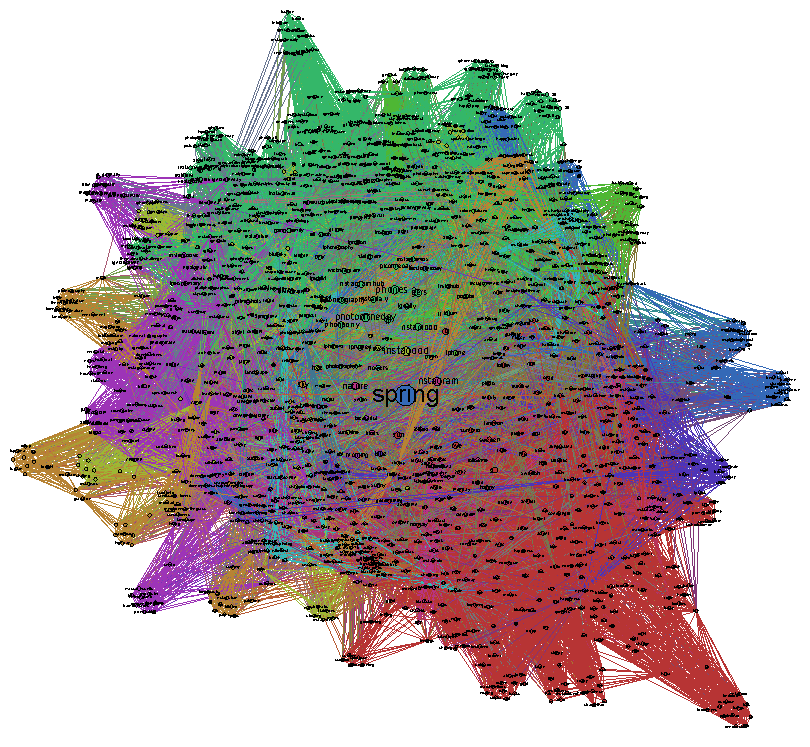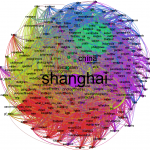While preparing and arranging today’s meal – Penne al Forno con Polpettine – to be documented and posted on Instagram, I thought: Why not preparing and arranging a pasta network with the help of the Instagram API and the Gephi network visualization software. I did this before for many other things such as Chinese cities or spring.
The special Instagram magic lies in the hashtags users are posting to their (and their friends’) images. These hashtags can be used to create social network datasets out of the image streams of the API. If someone is posting an image of their pasta dish and is tagging it with “#salmon”, then this tag is the link to all other images also tagged with “#salmon”. Theoretically one could do the next search for salmon and find out which images are referred to by this hashtag. This would produce a large map of human concepts plus their visualization in photographs.
What I did was taking a really small sample of 40 pasta images posted to Instagram during the last week and calculated the links between a) images and b) hashtags. The result is a bimodal network: images are connected to hashtags; and hashtags are connected to images and other hashtags. This is the resulting network:
I also created a version with all the images in the network as thumbnail, so you can see the different qualities in the image (brightness, colours, composition, filters etc.) Right now I am working an a way to automatically assemble and publish image based networks that would properly embed the images.
Some facts about pasta imagery on Instagram:
- There’s dinner pasta (upper left) and lunch pasta (upper right). Lunch pasta tends to be more colorful and bright, while dinner pasta can be very dim arrangements on restaurant tables or unboxed pizza and pasta deliveries.
- Another interesting category is tagged with “distasters”. This hashtags clearly corresponds to the images.
- The most important hashtags are: pasta, food, chicken, foodporn, delicious, italian, cooking, yummy, foodgasm, foodie.
- When looking at a larger sample of pasta pictures, the most important hashtags change a bit, but our small sample seems to be quite representative: pasta, food, foodporn, yummy, lunch, dinner, delicious, yum, italian, cheese, spaghetti, homemade …
- Filters are very frequently used in pasta photography: only 22% of all images are posted without any filters.
Finally, here’s a look at the top five pasta images:
4 out of 5 are photographed by Japanese IGers. So the next thing to look at will be the regional distribution of food hashtags. To be continued.













